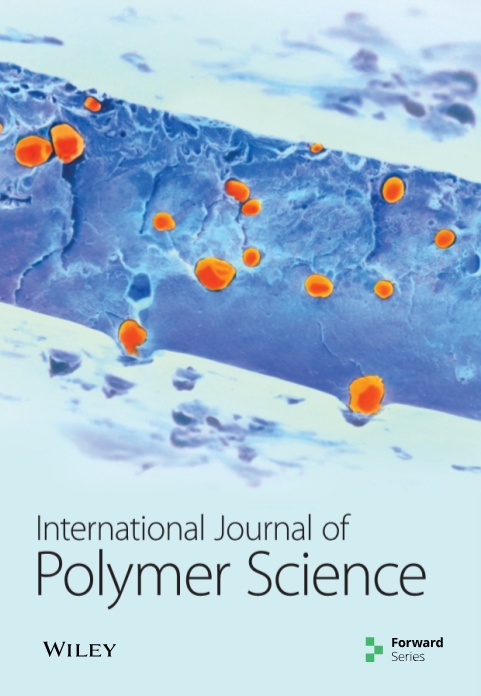Delamination Characteristics of Aluminum-Composite Bonds: Impact of Reinforcements and Matrices
IF 4.4
4区 化学
Q2 POLYMER SCIENCE
引用次数: 0
Abstract
Adhesion properties of metal-composite bonds are crucial in defining composite capability with other metallic components, and failures could lead to severe accidents. Hence, the study is aimed at the development and characterization of metal-composite bonds using different rigid adherends and adhesive materials (thermoset and thermoplastics). Among natural fibers, jute was used, while aramid, carbon, and glass woven reinforcements were employed from synthetic fibers. A simultaneous comparison of both thermoset and thermoplastic matrices was done using epoxy, polypropylene (PP), and polyvinyl butadiene (PVB) as adhesive materials. Floating roller delamination characterization proved variation in adhesion qualities governing different failure modes by varying adhesive even in a single rigid adherend. The highest fracture toughness was observed for aluminum-jute bonds made with PP and PVB that was due to toughness of matrix and intralaminar failure. Carbon being brittle in nature showed the most fluctuated performance with a 90% difference between the highest value of carbon-PVB and the lowest value of carbon-epoxy. Thermoplastic matrices owing to plasticity offered overall more fracture toughness than brittle thermoset resin. Furthermore, intralaminar was the dominant failure mechanism in the jute-based bond made with thermoplastic matrix.铝复合材料粘合剂的分层特性:增强材料和基质的影响
金属复合材料粘合剂的粘合性能对于确定与其他金属部件的复合能力至关重要,如果出现故障,则可能导致严重事故。因此,本研究旨在使用不同的刚性附着物和粘合材料(热固性和热塑性塑料)开发金属复合材料粘合剂并对其进行表征。在天然纤维中使用了黄麻,在合成纤维中使用了芳纶、碳纤维和玻璃纤维编织增强材料。使用环氧树脂、聚丙烯(PP)和聚乙烯丁二烯(PVB)作为粘合材料,同时对热固性和热塑性基材进行了比较。浮动辊分层表征证明,即使在单个刚性粘合剂中,不同的粘合剂也会产生不同的粘合质量,从而导致不同的破坏模式。使用 PP 和 PVB 制成的铝-黄麻粘合剂的断裂韧性最高,这是由于基体的韧性和层内破坏造成的。脆性碳的性能波动最大,碳-PVB 的最高值与碳-环氧树脂的最低值相差 90%。与脆性热固性树脂相比,热塑性基体因其可塑性而具有更高的断裂韧性。此外,层内断裂是热塑性基质黄麻粘合剂的主要失效机理。
本文章由计算机程序翻译,如有差异,请以英文原文为准。
求助全文
约1分钟内获得全文
求助全文
来源期刊

International Journal of Polymer Science
POLYMER SCIENCE-
CiteScore
6.10
自引率
0.00%
发文量
55
审稿时长
>12 weeks
期刊介绍:
The International Journal of Polymer Science is a peer-reviewed, Open Access journal that publishes original research articles as well as review articles on the chemistry and physics of macromolecules.
 求助内容:
求助内容: 应助结果提醒方式:
应助结果提醒方式:


